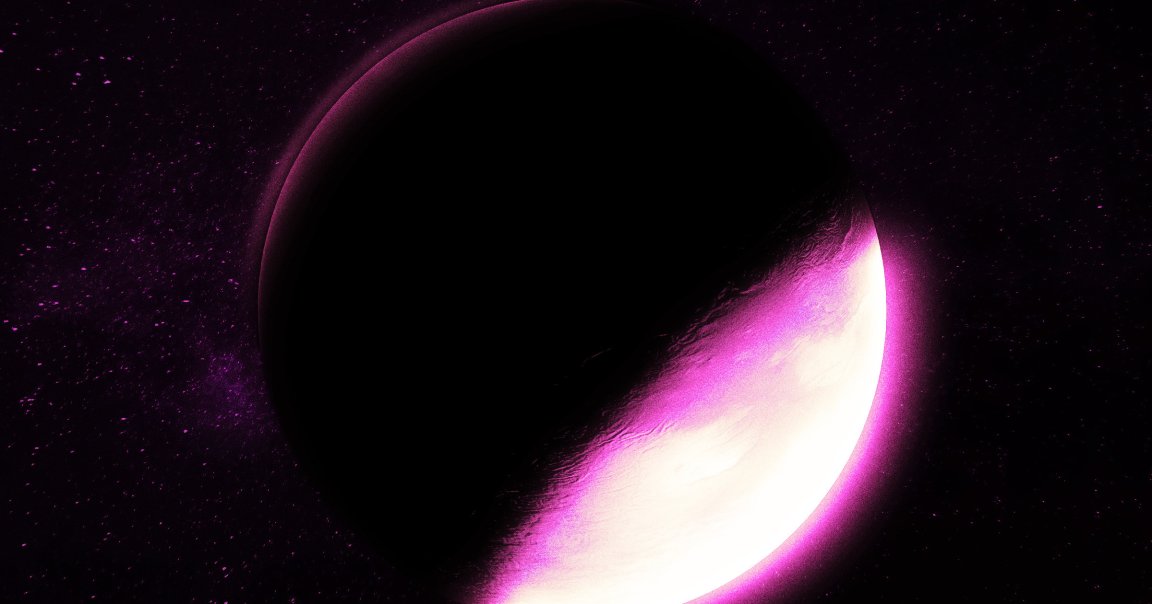
So much for heliocentrism.
An international team of astronomers using observations made with the James Webb Space Telescope have found evidence of massive planets out there that’re capable of forming their own planetary systems — without a star.
These planets would be the center of something like a mini version of our solar system where other, smaller planets revolve around it. But without the light of a star, these systems, if they exist, would go largely overlooked by our telescopes, lost to the dark void of space.
The work, a new study accepted for publication in the The Astronomical Journal, focuses on free-floating “rogue” planets which are not gravitationally bound to a star. While some rogue planets are first formed around a stellar object before being ejected from their system, the astronomers believe these ones may have formed from the same mechanism that gives birth to stars.
“These discoveries show that the building blocks for forming planets can be found even around objects that are barely larger than Jupiter and drifting alone in space,” lead author Belinda Damian, an astronomer at the University of St Andrews in Scotland, said in a statement about the work. “This means that the formation of planetary systems is not exclusive to stars but might also work around lonely starless worlds.”
Using James Webb observations taken between August and October 2024, the astronomers examined eight free-floating planets. With masses between five to ten times that of Jupiter, these belong to a class of objects believed to be the lowest mass objects that form from the collapse of the giant gas clouds that are sometimes referred to as stellar nurseries, as they’re typically associated with star formation.
For one reason or another, these objects didn’t accumulate enough mass to sustain nuclear fusion reactions in their cores and become proper stars. These shouldn’t be confused with brown dwarfs, however, which are much more massive substellar objects that are dozens of times heavier than Jupiter that also fail to kickstart nuclear fusion, earning them the moniker of “failed” stars.
In this latest work, the astronomers detected excess emissions in the infrared spectra of these objects, showing that six of them have emissions associated with warm dust. This indicates the presence of a disk, or a circumstellar cloud of gas and dust that surrounds the planet.
In itself, this isn’t unusual, and such disks have been detected around rogue planets before. Around stars, these disks, referred to as protoplanetary disks, are where dense regions of gas and dust can coalesce to form planets, and are the leftover material from the star’s formation which didn’t get sucked into its collapsing core.
But the kicker here is that the scientists have detected signs that the rogue planets’ disks are already exhibiting the crucial first steps of planetary formation in the form of harboring silicate grains, which appear to be growing and crystallizing. These dusty grains can clump together to form planetesimals, the large, solid objects that are the building blocks of a baby planet.
This is the first detection of silicate grains around a planetary mass object, the authors said. And it pairs tantalizingly with their previous study which showed that the rogue planet disks can last for millions of years, providing more than enough time to incubate inchoate worlds.
“Taken together, these studies show that objects with masses comparable to those of giant planets have the potential to form their own miniature planetary systems,” coauthor Aleks Scholz, who is also a St Andrews astronomer, said in the statement. “Those systems could be like the solar system, just scaled down by a factor of 100 or more in mass and size. Whether or not such systems actually exist remains to be shown.”
Ironically, then, maybe our ancestors weren’t totally off the mark with their whole geocentrism fixation — they just had the wrong planetary system in mind.
More on exoplanets: James Webb Spots Planets Forming Into Solar System in Real Time, Like an Organism’s First Cells